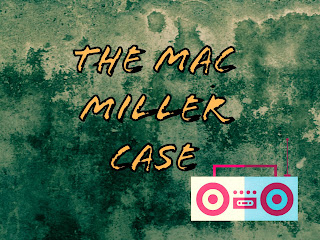Love Canal Incident
Residents in a small town
near Niagara Falls, New York began to experience health issues because of
exposure to toxic fumes and poisonous chemicals that were surfacing in their
neighborhoods (Friedrichs, 2010, pp.
66-67). When the inquiry about
the unusual circumstances in such an isolated area began, it was discovered
that the land had been acquired by a local school board and others and had a
canal in the plot of land that was drained and used as a dumping site by the
Hooker Chemical Corporation (Friedrichs, 2010, pp. 66-67). When the land was sold not much was said
about the many barrels of toxic waste that had been buried in the Love Canal
(Friedrichs, 2010; Gibbs, 2010). The
victims, again, were the residents who bought properties in the area, and
because their incomes were relatively average or below-average they were locked
in a community without the ability to escape the horrendous health concerns
(Friedrichs, 2010; Gibbs, 2010; Sherrow, 2001).
Moreover, once the dumping site became known to the public many of the
residents had no other option but to remain in the area because no other person
wanted to purchase property that was located in the Love Canal area (Gibbs,
2010; Sherrow, 2001). The victimization
expanded because of this and generations within families suffered an array of
serious health concerns and unnecessary deaths (Brown, 1979; Sherrow,
2001). Essentially, the illegal actions
by the Hooker Chemical Corporation caused financial and health harms in a
longitudinal manner and, at first, attempted to cover-up any wrong doing or
liability in the incident (Friedrichs, 2010; Gibbs, 2010; Sherrow, 2001).
Eventually, the Hooker
Chemical Corporation faced so much public scrutiny and costly legal battles
that a twenty million-dollar settlement was negotiated between the company and
the affected families in the Love Canal area (Friedrichs, 2010; Gibbs, 2010;
Thompson, 2013). Even with the
settlement and attempts to rejuvenate the environment in the area, there were
problems that were permanent (Gibbs, 2010; Thompson, 2013). That is, the land is still considered contaminated
by the government and private entities and now rests with nothing but a small
fence barricading the property (Gibbs, 2010; Thompson, 2013). The above-mentioned settlement, however, was
the only legal repercussion that the chemical company has faced (Friedrichs,
2010; Gibbs, 2010). After years of criticism,
Hooker Chemical Corporation became Occidental Chemical Corporation to avoid
affiliation with the Love Canal disaster, went on to become one of the world
leaders in the chemical industry and let the federal government relieve the
residents who had been victimized (Gibbs, 2010; Sherrow, 2001, Thompson,
2013). It was not until many years later
that residents in the area were properly evacuated and reimbursed for their
expenses used to purchase living quarters in the polluted area, but again, this
was done without much assistance from the chemical business (Friedrichs, 2010, Gibbs,
2010).
Prevention
of Toxic Waste Dumping Sites
In order to prevent these
types of environmental and human harms, companies that deal with toxic
substances should be routinely monitored with a strict regulatory process when
disposing of toxic substances. That is,
state and federal agencies need to have monitoring agents that routinely check the
disposal processes that businesses use.
Additionally, there should be stricter regulations about the distances
between businesses that produce harmful substances and residential
neighborhoods. Since there appears to be
a lack of criminal law enforcement against corporations that perform environmental
harms, better laws should be configured that hold individuals and organizations
who perform harmful activities accountable.
In other words, because there are humans who perform these activities
and know that the actions are wrong and harmful, there should be criminal
justice punishments for these individuals and any defense that that the
individuals were/are acting under the guidance of company policy should not be
allowed. In sum, only using civil
litigation to help victims and punish businesses is inappropriate and infers
that organizations and the individuals who work within them are able to bypass
the criminal justice system. Which, in
turn, furthers the idea that organizations can participate in activities that
harm the environment and many people and simply use their profits to avoid
prosecution a criminal court. Basically,
there should be criminal justice sanctions for people who participate in
environmental harms when they know that the actions are going to be harmful to
the environment and other living species.
Negligence should not be disregarded by the criminal justice system
because individuals are acting under the idea that they are doing things for
the best interest of their employer.
References
Brown, M. H.
(1979, December). Love canal and
the poisoning of America. The Atlantic.
Retrieved
from https://www.theatlantic.com/magazine/archive/1979/12/love-canal-and-
the-poisoning-of-america/376297/.
Friedrichs, D. O.
(2010). Trusted criminals: White collar
crime in contemporary society (4th
ed.). Belmont, CA:
Wadsworth.
Gibbs, L. M.
(2010). Love canal and the birth of the environmental health movement.
Washington: Island Press.
Sherrow, V.
(2001). Love canal: Toxic waste
tragedy. Berkeley Heights, NJ: Enslow
Publishers.
Thompson, C.
(2013, November 2).
Lawsuits: Love canal still oozes
after 35 years later.
USA Today.
Retrieved from
https://www.usatoday.com/story/money/business/2013/11/02/suits-claim-love-canal-still-
oozing-35-years-later/3384259/.



Comments
Post a Comment